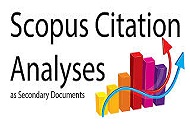Relasi Tanda pada Karakter Tokoh dalam Novel Rara Mendut Karya Y.B Mangunwijaya dan Kontribusinya Terhadap Pembelajaran Sastra di Sekolah Menengah Atas
DOI:
https://doi.org/10.33394/jk.v7i3.3826Keywords:
Semiotic, Icon, Index, Symbol, Characters, Literary Learning.Abstract
References
Al-Ma’ruf, A. I., & Nugraha, F. (2017). Pengkajian Sastra Teori dan Aplikasi. CV. Djiwa Amarta Press.
Aminuddin. (2011). Pengantar Apresiasi Karya Sastra. Sinar Baru.
Emzir, R., & Wicaksono, A. (2018). Tentang Sastra: Orkestrasi Teori dan Pembelajarannya. Garudhawaca.
Endraswara, S. (2008). Metodologi Penelitian Sastra: Epistemologi, Model, Teori dan Aplikasi. Pustaka Widyatama.
Fatimah, A. A. B., Syamsudduha, S., & Usman, U. (2021). Analisis Wacana Kritis Novel Genduk Duku Karya Y.B Mangunwijaya dan Relevansinya dengan Pembelajaran Literasi Sastra berbasis Gender di SMA. Jurnal Kependidikan: Jurnal Hasil Penelitian dan Kajian Kepustakaan di Bidang Pendidikan, Pengajaran dan Pembelajaran, 7(2), 453. https://doi.org/10.33394/jk.v7i2.3741
Hamalik, O. (2013). Kurikulum dan Pembelajaran. Bumi Aksara.
Hoed, B. H. (2011). Semiotika dan Dinamika Sosial Budaya. Komunitas Bambu.
Ismawati, E. (2013). Pengajaran Sastra. Ombak.
Jabrohim. (2014). Teori Penelitian Sastra. Pustaka Pelajar.
Kaelan. (2009). Filsafat Bahasa Semiotika dan Hermeneutika. Paradigma.
Lickona, T. (2013). Educating for Character. Bumi Aksara.
Miles, M. B., & Huberman, A. M. (2014). Analisis Data Kualitatif: Buku Sumber Tentang Metode-metode Baru (diterjemahkan Tjejep Rohendi Rohidi). UI Press.
Moleong, L. J. (2011). Metode Penelitian Kualitatif. PT Remaja Rosdakarya.
Muryati, S. (2013). Ideologi Budaya Jawa dalam Novel Genduk Duku Karya YB Mangunwijaya. 22, 11.
Muslich, M. (2011). Pendidikan Karakter Menjawab Tantangan Kritis Multidimensional. Bumi Aksara.
Nitiasih, P. K., & Hermawan, G. S. (2018). Semiologi: Simbol, Makna, dan Budaya. PT. Raja Grafindo Persada.
Nurgiyantoro, B. (2015). Teori pengkajian fiksi.Gadjah Mada University Press.
Nurgiyantoro, B., & Efendi, A. (2013). Prioritas Penentuan Nilai Pendidikan Karakter dalam Pembelajaran Sastra Remaja. Jurnal Cakrawala Pendidikan, 3(3). https://doi.org/10.21831/cp.v3i3.1626
Nurrachman, D. (2017). Teks Sastra dalam Perspektif Semiotika Pragmatis Charles Sanders Peirce. Al-Tsaqafa: Jurnal Ilmiah Peradaban Islam, 14(1), 83–88. https://doi.org/10.15575/al-tsaqafa.v14i1.1793
Pradopo, R. D. (2014). Beberapa Teori Sastra, Metode, Kritik, dan Penerapannya. Pustaka Pelajar.
Salahuddin, A., & Alkrienciehie, I. (2013). Pendidikan Karakter Pendidikan Berbasis Agama dan Budaya Bangsa. Pustaka Setia.
Septiana, H. (2019). Perempuan Jawa Dalam Novel Rara Mendut Karya Y.B. Mangunwijaya. 6(1), 15.
Sobur, A. (2013). Semiotika komunikasi. Remaja Rosdakarya.
Sonesson, G. (2013). The Natural History of Branching: Approaches to the Phenomenology of Firstness, Secondness, and Thirdness. Signs and Society, 1(2), 297–325. https://doi.org/10.1086/673251
Stanton, R. (2007). Teori fiksi Robert Stanton. Pustaka Pelajar.
Sugiyono. (2010). Metode penelitian pendidikan: (Pendekatan kuantitatif, kualitatif dan R & D). Alfabeta.
Syarif, N., Tang, M., & Usman, U. (2021). Idealisasi Nilai Pendidikan Lingkungan dalam Novel Anak Rantau (Kajian Ekokritik). Jurnal Kependidikan: Jurnal Hasil Penelitian dan Kajian Kepustakaan di Bidang Pendidikan, Pengajaran dan Pembelajaran, 7(2), 306-313. doi:https://doi.org/10.33394/jk.v7i2.3735
Tang, M. R. (2008). Mozaik Dasar Teori Sastra Dalam Penampang Objektif (1 ed.). Badan Penerbit UNM.
Teeuw, A. (2015). Sastra dan Ilmu Sastra. PT. Dunia Pustaka Jaya.
Wibowo, E. (2017). Makna Semiotik dalam Novel Anomie Karya Rilda A. OE. Taneko. 6(2), 13.
Yaumi, M. (2014). Pendidikan Karakter Landasan, Pilar, dan Implementasi. Prenadamedia Group.
Zoest, A. van. (1993). Semiotika Tentang Tanda, Cara Kerjanya dan Apa yang Kita Lakukan Dengannya. Yayasan Sumber Agung.
Downloads
Published
How to Cite
Issue
Section
Citation Check
License
License and Publishing AgreementIn submitting the manuscript to the journal, the authors certify that:
- They are authorized by their co-authors to enter into these arrangements.
- The work described has not been formally published before, except in the form of an abstract or as part of a published lecture, review, thesis, or overlay journal.
- That it is not under consideration for publication elsewhere,
- That its publication has been approved by all the author(s) and by the responsible authorities – tacitly or explicitly – of the institutes where the work has been carried out.
- They secure the right to reproduce any material that has already been published or copyrighted elsewhere.
- They agree to the following license and publishing agreement.
Authors who publish with JK agree to the following terms:
- Authors retain copyright and grant the journal right of first publication with the work simultaneously licensed under a Creative Commons Attribution License (CC BY-SA 4.0) that allows others to share the work with an acknowledgment of the work's authorship and initial publication in this journal.Â
- Authors are able to enter into separate, additional contractual arrangements for the non-exclusive distribution of the journal's published version of the work (e.g., post it to an institutional repository or publish it in a book), with an acknowledgment of its initial publication in this journal.
- Authors are permitted and encouraged to post their work online (e.g., in institutional repositories or on their website) prior to and during the submission process, as it can lead to productive exchanges, as well as earlier and greater citation of published work.
- Open Data Commons Attribution License, http://www.opendatacommons.org/licenses/by/1.0/ (default)

This work is licensed under a Creative Commons Attribution-ShareAlike 4.0 International License.








